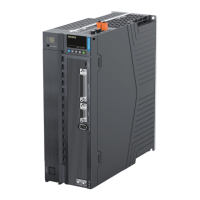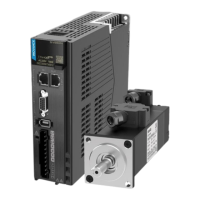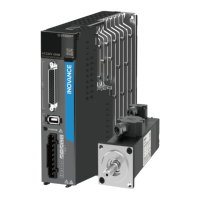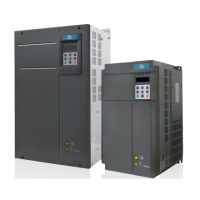Description of Fault Codes
‑50‑
Cause
Confirming Method
Solution
3. The regenerative resistor
fails.
If the built‑in regenerative
resistor is used (H02.25 = 0),
check whether terminals P
⊕ and D are jumpered. If
yes, measure the resistance
between terminals C and D.
If an external regenerative
resistor is used (H02.25 = 1
or 2), measure the resistance
of the external regenerative
resistor connected between
terminals P ⊕ and C.
For details, See table
"Specifications of the
regenerative resistor" in
SV680P Series Servo Drive
Commissioning Guide.
1. If the resistance is "∞"
(infinite), the regenerative
resistor is disconnected
internally.
2. If a built‑in regenerative
resistor is used, change to
use an external
regenerative resistor
(H02.25 = 1 or 2) and
remove the jumper
between terminals P ⊕
and D. Select an external
regenerative resistor of
the same resistance and
equal or higher power
than the built‑in one.
3. If an external regenerative
resistor is used, replace
with a new one and
connect it between
terminals P⊕ and C.
4. Set H02.26 (Power of
external regenerative
resistor) and H02.27
(Resistance of external
regenerative resistor) to
values consistent with the
specifications of the
external regenerative
resistor used.

